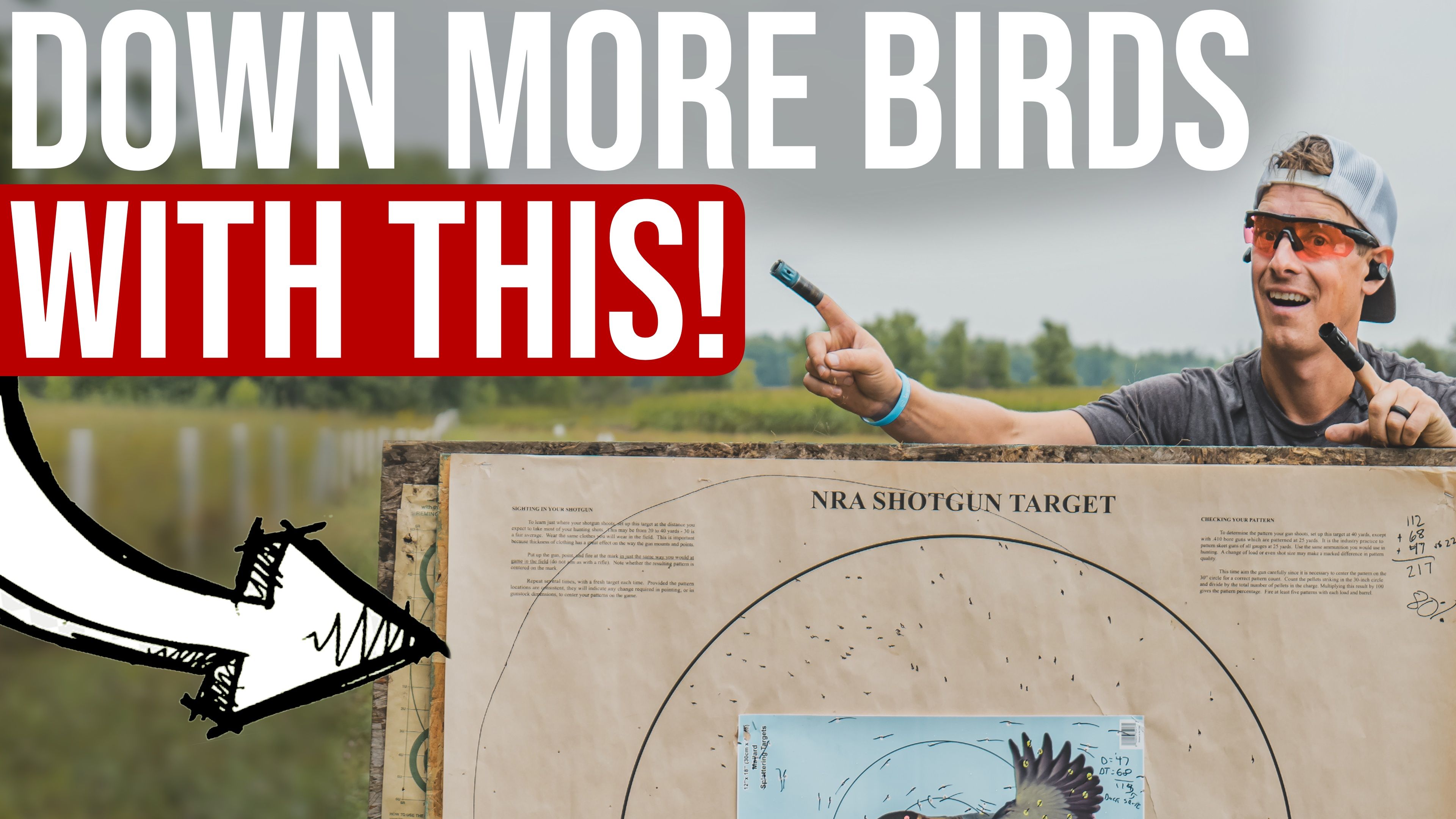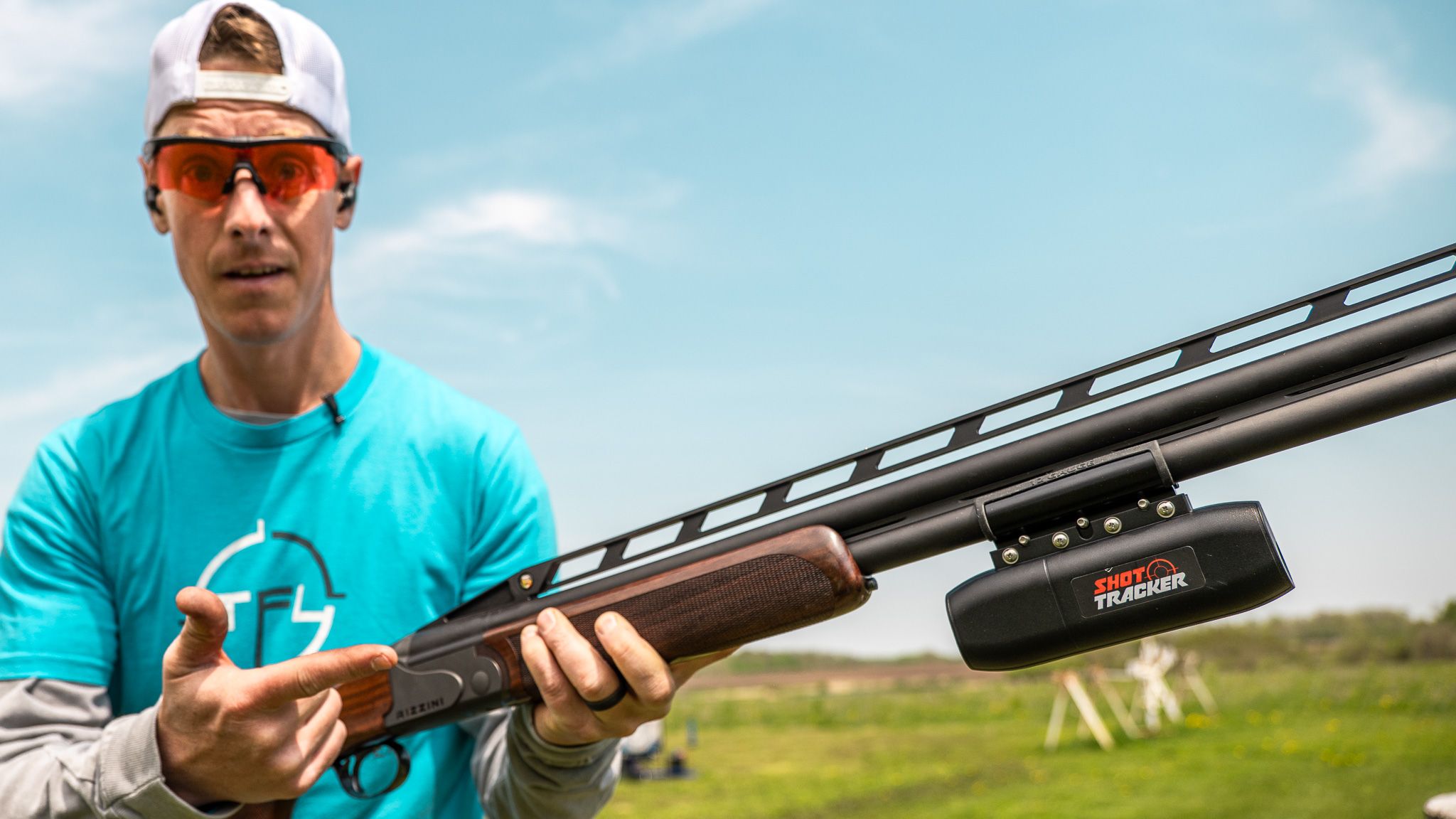This Is Why You Should Pattern Your Shotgun | How To Shotgun #9
Sep 28, 2023
If you're looking to have more success on the field or on the range, one practice that a lot of shooters often overlook is the patterning of their shotgun. This is a really simple task that can give you insight into why you're not hitting as many targets as you'd like. Today we will break down what patterning is, how to do it, and how it can affect your success in the field.
When it comes to shooting sports or hunting, accuracy is paramount. A well-patterned shotgun can be the difference between hitting your target cleanly or missing entirely. In this guide, we'll delve into the art of patterning a shotgun and explore why it matters for your shooting success.
What is Shotgun Patterning?
Shotgun patterning is the process of determining how your shotgun distributes its pellets when fired. It involves shooting at a target and examining the spread of shot pellets to understand the gun's performance. The pattern is typically measured at a specific distance, often 20, 30, or 40 yards, depending on the intended use of the shotgun. Today, we're using a Mossberg 940 Pro and Federal ammunition at 30 yards.
Why Does Shotgun Patterning Matter?
-
Knowledge is Power: When you have knowledge of exactly how your specific shotgun, ammo, and choke combo pattern, you will be more successful by understanding how your gun shoots, allowing you to make the necessary adjustments or modifications to hit your targets more consistently.
-
Ammunition Selection: Different types of shotgun ammunition perform differently regarding pattern performance. Patterning helps you choose the right load for your intended purpose, whether it's hunting, clay shooting, or home defense.
-
Effective Range: Patterning helps you determine the effective range of your shotgun with a specific load. Knowing the maximum effective distance you can reliably hit your target ensures ethical hunting and more successful shooting.
How to Pattern a Shotgun: Step-by-Step
Follow these steps to pattern your shotgun effectively:
1. Choose the Right Ammunition:
- Select the shotgun shells you plan to use.
- Ensure they match the intended purpose (e.g., birdshot for hunting birds, buckshot for home defense).
- Today we're assuming we'll be shooting ducks at 30-40 yards. Knowing what our ammo and choke tube setup will be is very important. Different combinations of these factors will dramatically change how our pattern acts down range. We'll start with a cylinder choke tube and federal bismuth upland shotshells. To better understand how our shot will perform down range, the first thing we're going to do is count how many pellets are in the current load we're shooting. You can cut open a shell to count the pellets or find this information on the manufacturer's website. We need to know the pellet count so you can determine what percent hit the paper target.
2. Set Up a Target:
- Place a large sheet of paper or cardboard at your chosen distance (e.g., 30 yards). There are many patterning papers available online. For our evaluation, we are mainly concerned with how many pellets land within a 30-inch circle, so we purchased a target with the 30" circle.
- If you just have plain paper, you can draw a 30-inch circle and mark a clear aiming point in the center. We like to staple an additional target-specific paper at the center of our circle so we can break down the shot even more. In this case, we have a smaller rectangular target with an image of a duck at the center to make the testing much more realistic.
3. Shoot the Pattern:
- Position yourself at the specified distance from the target.
- Aim precisely at the center of the target and fire one shot.
- Use a stable rest or shooting aid to minimize human error.
4. Examine the Pattern:
- Approach the target and examine the pellet distribution on the paper.
- Count the number of pellets within your target area (e.g., a 30-inch circle). We even went a step further and counted the number of pellets in our overlayed duck target. On our first attempt (Cylinder choke and federal bismuth with 270 pellets) we found that 52 of our 270 pellets didn't land anywhere on the target. Within the 30-inch circle, only 60% of our load was within this radius. We found that 22 of our pellets landed in the duck target.
- Besides just running the numbers, it's important to assess the density of the pattern and note any gaps or irregularities. With this particular ammo and choke combination, we found that our pattern was more spread out than we'd prefer and was less than ideal. We would like to see those extra 52 pellets make it on the paper!
5. Make Adjustments:
- Consider making adjustments if your pattern is off-center or too dense/sparse.
- You can change choke tubes or experiment with different loads. Making these adjustments is the meat and potatoes of why we pattern in the first place. We need to know how our equipment will alter our shot in various scenarios.
6. Repeat as Needed:
- Patterning may require multiple shots and adjustments to achieve the desired results. 3-5 shots is ideal to get an average of any given load/choke combo.
- Continue the process until you achieve an ideal pattern.
- Now that we understand the patterning process, we will make a couple of changes and see if we can increase our 60% performance from our first shot.
Pattern #2 - We were not stoked about our spread on the first attempt. The first thing we changed was our choke tube. Instead of our cycinder choke, we put on a Carlsons Cremator choke intended for midrange waterfowl hunting.
- We first noticed that the Point of Impact (POI) was left of our Point of Aim (POA). This is important in the field as you may have to alter how you shoot.
- Regardless, we had much better results after this choke tube change. Instead of 60% in the 30" circle, we now had 80% of our pellets within our 30-inch circle. Instead of only 22 pellets in the duck target, we had 47!
- For these first two shots, we recognized that our point of impact was a bit left. As we said, this may give you insight as to how you need to adjust your shot in the field, but it may also reveal other things about your shooting. If your gun doesn't fit you properly, it can lead to discrepancies in your point of impact. If you'd like to know more about proper gun fit, you need to check out our content on this topic (HERE)
- We're still super happy with this particular pattern. 80% on target is pretty good! We'd recommend taking 3-5 shots to really gain an understanding of how your shotgun is patterning. We're going to take one more shot just for curiosities sake. Instead of sticking with the Federal Hevi-Bismuth, we will tried Federal Speed-Shok.
Pattern #3 - It's important to note that if you change ammo, you have to go back to step #1 and know how many pellets are in your new load for comparison. The bismuth had 270 pellets - our new speed-shok ammo has 156 pellets.
- We were very impressed with this pattern. 93% of the pellets landed within the 30-inch circle. But just like everything, these stats come with a catch. Yes, 93% is great, but we have significantly fewer pellets overall. Because the speed-shok had less pellets, we found that the 30-inch circle had more holes in it. Just because we achieved a higher percentage on the target doesn't mean our pattern will also be distributed. This leads us to the catch-all of why we need to pattern. Would you rather have 93% on target with 156 total pellets or 80% on target with 270 total pellets? There are a lot of directions this debate could go, but it all depends heavily on your shooting scenario and shooting habits. This is a question that you have to answer for yourself when you get out to pattern your shotgun in preparation for your next hunt!
Conclusion
Shotgun patterning is a crucial practice for any shotgun owner, whether you're a seasoned hunter or a recreational shooter. Understanding how your shotgun performs and making the necessary adjustments can significantly improve your accuracy and enhance your overall shooting experience.
Take the time to pattern your shotgun with different loads, and you'll unlock its full potential for precision and success in the field or on the range. Try out different ammo with different chokes and arm yourself with the knowledge to have more success in the field.
Whether our targets in the field or our targets in life, we will only hit what we are focused on, so live the #targetfocusedlife
Stay Target Focused,
Steve










